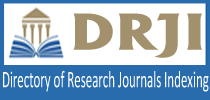INSIGHTS INTO THE DEMOGRAPHIC DIVIDEND AND THE WINDOW OF OPPORTUNITY: A CONCEPTUAL OVERVIEW
DOI:
https://doi.org/10.36004/nier.es.2023.1-06Keywords:
demographic dividend, demographic window, conceptualizationAbstract
The demographic dividend presents the conceptual framework through which changes in the population's age structure positively affect economic development. However, the demographic dividend is a complex concept, and, more than two decades after its inception, approaches remain diverse. This paper presents a literature analysis on the demographic dividend to understand the concept of the demographic dividend and its relationship to its interrelated term ̶ the demographic window of opportunity.
The literature analysis was undertaken following an evolutionary approach, including an examination of definitions of the demographic dividend and methodologies for its assessment. Two different approaches to view the demographic dividend, the demographic and the economic, were discussed, as well as the two indicators – the demographic support rate and the economic support rate.
The results of the analysis confirmed the presumption of the demographic dividend and the demographic window of opportunity as being two distinct concepts – mutually interrelated but not substitutable. Also, for the analysis of the demographic dividend, the demographic support ratio indicator is as necessary as the economic support ratio, influencing the policy – making process at the national level in achieving the demographic dividend.
The study underlines the importance of distinguishing between the concept of the window of opportunity that is created by demographic change and the demographic dividend – the positive economic outcome of these changes. Employing the concept of a window of opportunity, directly linked to the demographic dividend, would create the integrative framework needed to identify the pathways of positive demographic influence on economic development.
Downloads
References
Ahmed, S. Cruz, M., Quillin, B., & Schellekens, P. (2016). Demographic change and development a global typology. World Bank Policy Research Working Paper. 7893. Available at SSRN: https://ssrn.com/abstract=2874029
Barrientos, A., & Hulme, D. (2009). Social protection for the poor and poorest in developing countries: reflections on a quiet revolution. Oxford Development Studies, 37(4), 439–456. https://doi.org/10.1080/13600810903305257
Barsukov, V. N. (2019). From the demographic dividend to population ageing: world trends in the system-wide transition. Economic and social changes-facts trends forecast, 12(4), 167–182. https://doi.org/10.15838/esc.2019.4.64.11
Bloom D. E., & Williamson J. G. (1998). Demographic transitions and economic miracles in emerging Asia. The World Bank Economic Review, 12(3), 419–455. https://doi.org/10.1093/wber/12.3.419
Bloom, D. E., & Canning, D. (2004). Global demographic change: dimensions and economic significance. Population and Development Review, 34, 17–51. http://www.jstor.org/stable/25434758
Bloom, D. E., Canning, D., & Sevilla, J. (2003). The demographic dividend: a new perspective on the economic consequences of population change. Rand. https://www.rand.org/pubs/monograph_reports/MR1274.html
Bloom, D. E., Canning, D., Fink, G., & Finlay, J. E. (2007). Does age structure forecast economic growth? International Journal of Forecasting, 23(4), 569–585. https://doi.org/10.1016/j.ijforecast.2007.07.001
Cai, F. (2010). Demographic transition, demographic dividend, and Lewis turning point in China. China Economic Journal, 3(2), 107–119. https://doi.org/10.1080/17538963.2010.511899
Canning, D., Raja, S., & Yazbeck, A. S. (Eds.). (2015). Africa’s demographic transition: dividend or disaster? In: World Bank Group. http://documents.worldbank.org/curated/en/802811468187135148/Africa-s-demographic-transition-dividend-or-disaster
Chauhan, S., & Arokiasamy, P. (2018). India’s demographic dividend: state-wise perspective. Journal of Social and Economic Development, 20(1), 1–23. https://doi.org/10.1007/s40847-018-0061-7
Cincotta, R. P. (2008). How democracies grow up. Foreign Policy, 165, 80–82. Aviable: https://foreignpolicy.com/2009/10/09/how-democracies-grow-up/
Cuaresma, Crespo J., Lutz, W., & Sanderson, Warren. (2014). Is the Demographic Dividend an Education Dividend? Demography, 51(1), 299–315. https://doi.org/10.1007/s13524-013-0245-x
Eastwood, R., & Lipton, M. (2011). Demographic transition in sub-Saharan Africa: How big will the economic dividend be? Population Studies, 65(1), 9–35. https://doi.org/10.1080/00324728.2010.547946
Eastwood, R., & Lipton, M. (2012). The demographic dividend: Retrospect and prospect. Economic Affairs, 32(1), 26–30. https://doi.org/10.1111/j.1468-0270.2011.02124.x
Elhadary, Y., Abdelatti, H., & Nour, A. (2018). Demographic Dividends in Sudan: Opportunities and Challenges. Journal of Scientific Research and Reports, 19(4), 1–19. https://doi.org/10.9734/jsrr/2018/41955
Farid, S., & Mostari, M. (2022). Population transition and demographic dividend in Bangladesh: extent and policy implication. Journal of Social and Economic Development, 24, 108–126. https://doi.org/10.1007/s40847-021-00173-x
Furtună, D. (2017). Homo Aggressivus. De ce nu se opresc războaiele și violența. Ed II. Mihăilești: ON, 675 p. ISBN 978-606-94270-0-2.
Groth, H., & May, J. F. (2017). Africa’s population: In search of a demographic dividend. Springer International Publishing. https://doi.org/10.1007/978-3-319-46889-1
Groth, H., May, J. F., & Turbat, V. (2019). Policies Needed to Capture a Demographic Dividend in Sub-Saharan Africa. Canadian Studies in Population, 46, 61–72. https://doi.org/10.1007/s42650-019-00005-8
Islam, M. M. (2016). Demographic transition and the emerging windows of opportunities and challenges in Bangladesh. Journal of population research, 33, 283–305. https://doi.org/10.1007/s12546-016-9174-z
Islam, M. M. (2020). Demographic transition in Sultanate of Oman: emerging demographic dividend and challenges. Middle East Fertility Society Journal, 25(1). https://doi.org/10.1186/s43043-020-00022-7
James, K. S. (2008). Glorifying malthus: Current debate on “demographic dividend” in India. Economic and Political Weekly, 43(25), 63–69. https://www.epw.in/journal/2008/25/special-articles/glorifying-malthus-current-debate-demographic-dividend-india.html
James, K. S. (2018). Measuring demographic dividend: Approaches and Methods. In Janasamkhya, XXXVI–VII. https://janasamkhya.net/online/1819/001.pdf
Lee, R. D., & Mason, A. (2006). What is the demographic dividend? Finance and Development, 43(3), 16–17. https://www.scopus.com/inward/record.uri?eid=2-s2.0-33751509730&partnerID=40&md5=1c1cbb379d03a2d3cfdc0581cbfcd6ef
Margaret, K. (2020). Youth Empowerment in Kenya: Paths to the Demographic Dividend. African Multidisciplinary Journal of Research (AMJR), 5(2), 1-32. https://journals.spu.ac.ke/index.php/amjr/article/view/88/83
Mason, A. (2003). Capitalizing on the Demographic Divdend. In: Population and Poverty: Achieving equity, equality and sustainability. Series 8 Population and development strategies. New York, (pp. 39-48). https://www.unfpa.org/sites/default/files/pub-pdf/population_poverty.pdf
Mason, A. (2005). Demographic transition and demographic dividends in developed and developing countries. https://www.un.org/en/development/desa/population/events/pdf/expert/9/mason.pdf
Mason, A., Lee, R., & Jiang, J. X. (2016). Demographic dividends, human capital, and saving. Journal of the Economics of Ageing, 7, 106–122. https://doi.org/10.1016/j.jeoa.2016.02.004
May, J. F., & Rotenberg, S. (2020). A Call for Better Integrated Policies to Accelerate the Fertility Decline in Sub-Saharan Africa. Studies in family planning, 51(2), 193–204. https://doi.org/10.1111/sifp.12118
Mitra, S., & Nagarajan, R. (2005). Making use of the window of demographic opportunity: an economic perspective. Economic and Political Weekly, 40(50), 5327–5332. https://www.epw.in/journal/2005/50/special-articles/making-use-window-demographic-opportunity.html
Nayab, D. E. (2008). Demographic dividend or demographic threat in Pakistan? The Pakistan Development Review, 47(1), 1–26. https://www.jstor.org/stable/41260816
Omoju, O. E., & Abraham, T. W. (2014). Youth bulge and demographic dividend in Nigeria. African Population Studies, 27(2), 352–360. https://doi.org/10.11564/27-2-480
Oosthuizen, M., & Magero, J. (2021). Modelling the Demo graphic Dividend: A Review of Methodologies. https://esaro.unfpa.org/sites/default/files/pub-pdf/modelling_the_demographic_dividend-_a_review_of_methodologies_v5_1.pdf
Pace, Roberta., & Ham-Chande, Roberto (eds). (2016). Demographic Dividends: Emerging Challenges and Policy Implications. Demographic Transformation and Socio-Economic Development, vol 6. Springer, Cham. https://link.springer.com/book/10.1007/978-3-319-32709-9
Phang, H. S. (2007). Demographic dividend and labour force transformations in Asia: the case of Korea. In United Nations Expert Group Meeting on Social and Economic Implications of Changing Population Age Structures Mexico City, 31 August – 2 September 2005. ESA/P/WP.201, Unted Nations, New York (pp. 119-139). https://www.un.org/en/development/desa/population/events/pdf/expert/9/full_report.pdf
Pool, I. (2007). Demographic Dividends: Determinants of Development or Merely Windows of opportunity. Ageing Horizons, 7, 28-35. https://www.ageing.ox.ac.uk/download/44
Queiroz, B. L., & Turra, C. M. (2010). Window of Opportunity: socioeconomic consequences of demographic changes in Brazil. https://ntaccounts.org/doc/repository/QT2010.pdf
Roychowdhury, A., Chandrasekhar, C. P., Ghosh, J. (2006). The “Demographic Dividend” and Young India’s Economic Future, Economic & Political weekly 41(49). https://www.epw.in/journal/2006/49/special-articles/demographic-dividend-and-young-indias-economic-future.html#
Sathar, Z., Royan, R., & Bongaarts, J. (editors). (2013). Capturing the Demographic Dividend in Pakistan. New York. https://pakistan.unfpa.org/sites/default/files/pub-pdf/2013_CapturingDemoDivPak_0.pdf
Ssewamala, F. M. (2015). Optimizing the “demographic dividend” in young developing countries: The role of contractual savings and insurance for financing education. International Journal of Social Welfare, 24(3), 248–262. https://doi.org/10.1111/ijsw.12131
Turra, C. M., & Queiroz, B. L. (2007). Before it’s too late: demographic transition, labor supply, and social security problems in Brazil. In United Nations Expert Group Meeting on Social and Economic Implications of Changing Population Age Structures Mexico City, 31 August – 2 September 2005. ESA/P/WP.201, Unted Nations, New York (pp. 103-118). https://citeseerx.ist.psu.edu/document?repid=rep1&type=pdf&doi=b53fbf486051b9c5cfdc6af5a61b5978d59c3d02#page=117
United Nations. (2004). World Population to 2300: Department of Economic and Social Affairs, Population Division. ST/ESA/SER. A/236, United Nations, New York. Available: https://www.un.org/development/desa/pd/sites/www.un.org.development.desa.pd/files/files/documents/2020/Jan/un_2002_world_population_to_2300.pdf
United Nations. (2013). National Transfer Accounts Manual: Measuring and Analysing the Generational Economy. United Nations, New York. Available: https://ntaccounts.org/doc/repository/NTA%20manual%202013.pdf
Vallin, J. (2005). The demographic window: An opportunity to be seized. Asian Population Studies, 1(2), 149–167. https://doi.org/10.1080/17441730500317170
Williamson, J. G. (2013). Demographic Dividends Revisited. Asian Development Review, 30(2), 1-25. https://doi.org/10.1162/ADEV_a_00013
Woldegiorgis, M. M. (2023). Towards inclusive development through harnessing demographic dividend? Empirics for Africa. Journal of Social and Economic Development, 25(2), 380–402. https://doi.org/10.1007/s40847-023-00243-2
World Bank. (2016). Policy Priorities in an Era of Demographic Change. In Global Monitoring Report 2015/2016: Development Goals in an Era of Demographic Change (pp. 191–226). https://doi.org/10.1596/978-1-4648-0669-8_ch6
Yip, P. S. F., Cheung, K. S. L., Law, S. C. K., Chi, I., & Robine, J. M. (2010). The demographic window and economic dependency ratio in the Hong Kong SAR. Asian Population Studies, 6(2), 241–260. https://doi.org/10.1080/17441730.2010.494452
Youssef, H., Elden, N. M. K., & Abou Ali, H. (2018). Realising the Prospects of the Demographic Dividend in Selected Arab Countries. Epidemiology Biostatistics and Public Health, 15(3), https://doi.org/10.2427/12888















